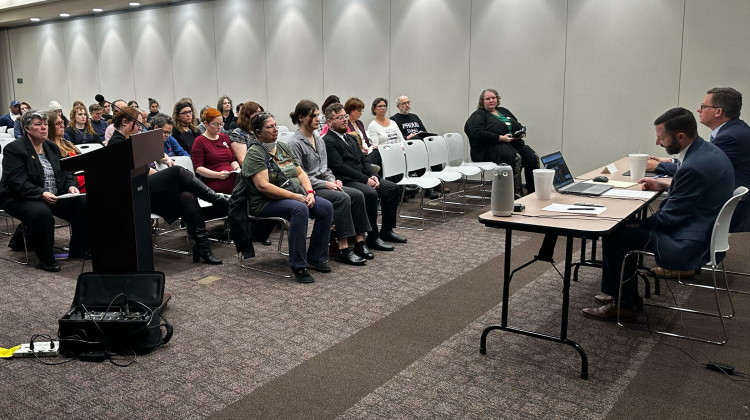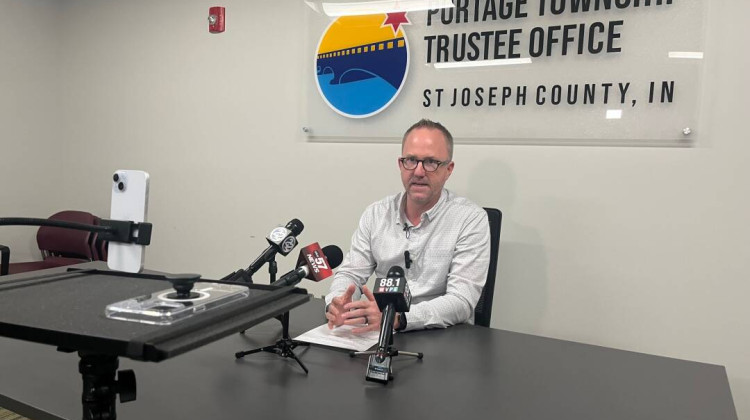
The executive order outlines that counties must be designated a lower-risk color for two consecutive weeks before moving to fewer restrictions.
Justin Hicks/IPB NewsGov. Eric Holcomb signed his latest executive order, with new limited COVID-19 restrictions. The order, made public Friday, includes more details on enforcement and how counties will move through those restrictions.
The new restrictions, announced Wednesday, are based on the color a county is designated on the state’s metrics map. The map is coded based on seven-day rolling averages and cases per 100,000 residents and is updated weekly.
The executive order outlines that counties must be designated a lower-risk color for two consecutive weeks before moving to fewer restrictions. However, counties will move immediately to more restrictive categories as the county’s designation worsens.
The map currently shows only five counties not subject to the new restrictions.
The newly-signed executive order also illuminates enforcement. The governor’s mask order focused heavily on education and charged local and county health departments with doing so. This newest order expands that to police, the Alcohol and Tobacco Commission and the Indiana Department of Homeland Security.
For businesses specifically, the executive order recommends issuing a verbal order, then an order to cease unsafe practices, and then an order to close the business if it doesn't comply. The executive order also suggests it could be referred to a local prosecuting attorney.
Though it is important to note, enforcement mechanisms remain optional.
The executive order also provides definitions for the previously outlined restrictions. For example, social gatherings are defined as "an event, assembly, or convening that brings together multiple people, individually or from separate households, in a single location, whether held indoors or outdoors, in a private residence, commercial venue, or other public place, at the same time and in a coordinated fashion where a significant purpose is to interact with others – such as a wedding reception, funeral visitation, family reunion, party, barbecue, picnic, or club meeting."
Orange counties:
- Social gatherings of any kind are limited to 50 people
- Special, seasonal or commercial events planned for more than 50 people require approval of a safety plan by the local health department
- Attendance at winter indoor K-12 extracurricular and co-curricular events is limited to 25 percent capacity
- Capacity in common areas and break rooms should be reduced and users should be socially distanced
- Community rec sports leagues and tournaments may continue with attendance limited to participants, required personnel and parents/guardians only
Red counties:
- Social gatherings of any kind are limited to 25 people
- Special, seasonal or commercial events planned for more than 25 people require approval of a safety plan by the local health department – college and professional sports are included
- Attendance at winter indoor K-12 extracurricular and co-curricular events is limited to participants, support personnel and parents/guardians
- Local officials may consider limiting hours for the operation of bars, nightclubs and restaurants
- Community rec sports leagues and tournaments may continue with attendance limited to participants, required personnel and parents/guardians only
- Senior care activities are suspended
- Hospitals, long-term care facilities and other congregate settings may impose visitation limits
- Common areas and break rooms should be closed
Contact Lauren at lchapman@wfyi.org or follow her on Twitter at @laurenechapman_.
 DONATE
DONATE







 Support WFYI. We can't do it without you.
Support WFYI. We can't do it without you.